The heigh of your bar stools may seem like a trivial decision, but it can greatly affect the overall experience of sitting at a bar, kitchen counter, or high table. The right height provides comfort, supports good posture, and enhances the aesthetic appeal of your space. A stool that’s too high or too low can lead to discomfort, making it awkward to eat, drink, or even engage in conversation. Selecting the appropriate height is not just about comfort, though—it’s also about making your space functional and cohesive. So, whether you’re designing a home bar or outfitting a kitchen island, understanding bar stool height is essential.
Understanding Bar Stool Heights: A General Overview
What Size Bar Stools Do I Need, Bar stools typically fall into one of three height categories: counter height, bar height, and extra tall. The counter-height stool, standing around 24 to 27 inches, pairs best with surfaces that sit between 35 and 39 inches high. Moving up, bar-height stool range from 28 to 33 inches, ideal for counters or bars standing about 40 to 43 inches high. For extra tall counters, you’ll need stools 34 to 40 inches in height, fitting counters up to 47 inches. These general guidelines are just that—general. Everyone has unique comfort needs, and while these measurements provide a starting point, personal preference always reigns supreme.
Standard Bar Stool Height Guidelines
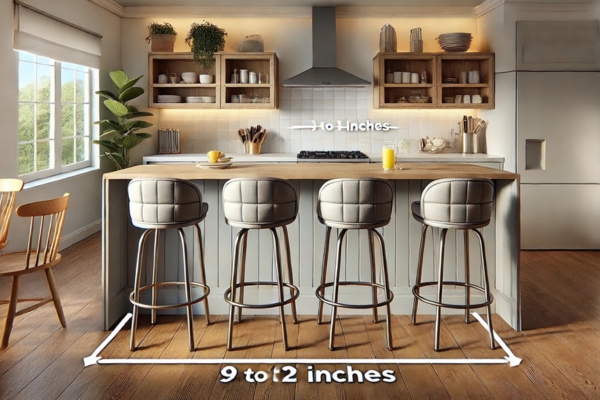
For the best seating experience, aim for a gap of 9 to 12 inches between the stool seat and the bottom of the counter. This space lets you sit comfortably, with enough room for your legs to move freely without feeling squeezed. Remember, not everyone is the same height, and children may require a shorter stool than adults. Before you invest in stools, measure the exact height of your counter to avoid unnecessary discomfort—variations as small as an inch can make a significant difference in comfort.
How To Measure The Ideal Bar Stool Height
Start by measuring from the floor to the underside of the counter. Subtract about 10 inches from this measurement, and you’ll find the sweet spot for the ideal stool height. So, if your counter is 42 inches high, you’ll want a stool around 32 inches tall. Precise measurements ensure your stools complement the space perfectly. While it may seem tedious, a measuring tape is your ally in avoiding discomfort and maximizing enjoyment for everyone who takes a seat.
Bar Stools For Different Settings

Not all bar stools are created equal, and neither are the spaces they occupy. The purpose of your bar stool—be it for a lively kitchen, a cozy home bar, or a breezy outdoor setup—will dictate its height, style, and material. Kitchens demand durability and easy-to-clean finishes, while outdoor stool must be weather-resistant. Bar stool are now design statements, merging practicality with the aesthetics of your indoor and outdoor spaces, becoming key elements that transform any area.
Bar Stools For Kitchen Counters
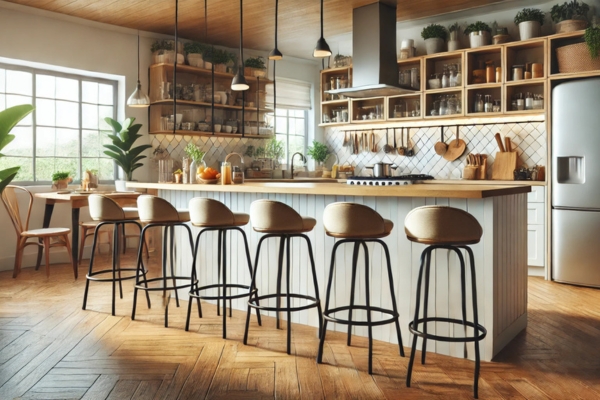
In the kitchen, stools that measure between 24 and 27 inches suit most counters. Kitchens are bustling spaces, so choose stool that can withstand spills and frequent use. Wooden stools or metal frames with wipeable seats are popular picks, balancing function with style. If you foresee long stays at the counter, such as family dinners or casual gatherings, consider a stool with backrests for added support and comfort.
Bar Stools For Home Bars
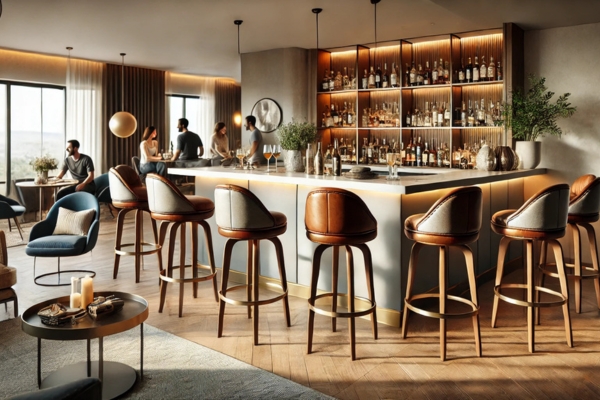
For your home bar, opt for stool around 28 to 33 inches high—perfect for that sleek, elevated surface where friends gather, laughter flows, and relaxation is the order of the day. Upholstered or leather stool lend sophistication to the space, and padded seats provide the comfort you’ll appreciate during long conversations. Home bars often reflect personal style, so don’t be afraid to choose stools that add flair and fit seamlessly into your decor’s vibe.
Bar Stool For Outdoor Areas
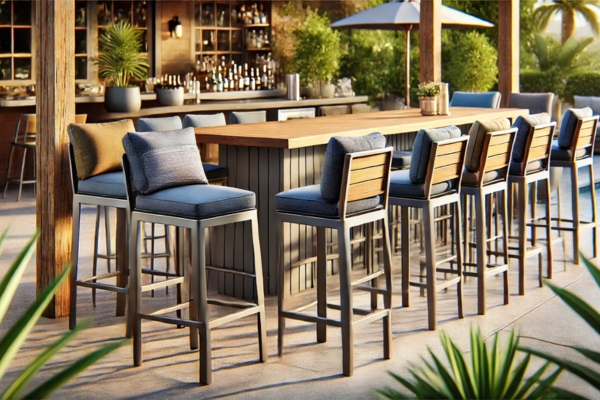
Outdoor bar’s stools? They need to be tough yet stylish. Choose materials like metal, treated wood, or plastic that can handle weather’s capricious nature. While heights vary with outdoor surfaces, bar-height stool remain a popular choice. Cushions in UV-resistant fabric add comfort and a splash of color, while finishes that resist fading keep your stools looking fresh, season after season.
Adjusting For Counter Height And Legroom
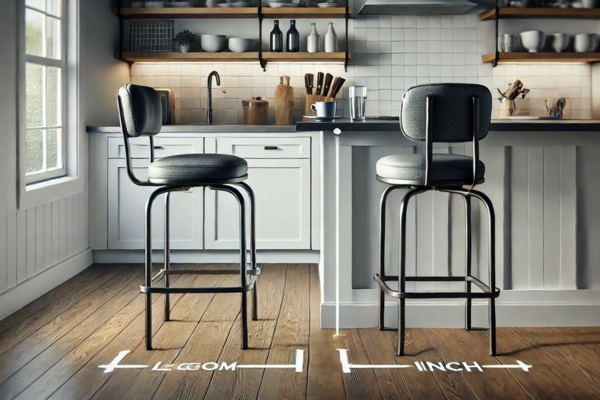
Proper legroom is non-negotiable. Too tall, and knees jam against the counter; too short, and you sit awkwardly low, craning your neck. Aim for a comfortable 10-inch space between the stool seat and the counter’s underside. If taller family members frequent the space, consider stools with adjustable height settings. Legroom isn’t just about comfort—it shapes the entire experience, whether you’re dining, drinking, or simply relaxing.
Adjustable Bar Stools: A Flexible Solution
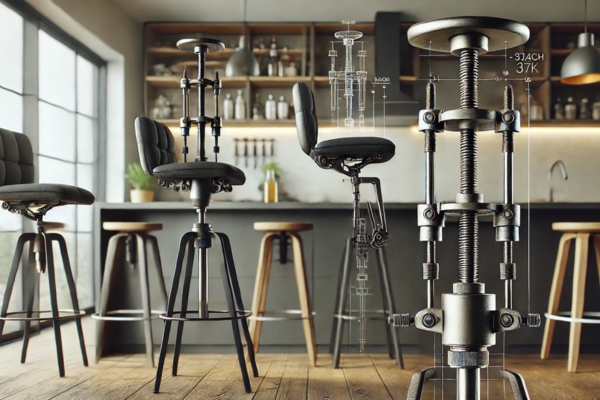
Adjustable bar’s stools provide a practical and stylish solution for varied seating needs. These stools are perfect for spaces with diverse users, allowing each person to set the seat at their ideal height. Hydraulic and screw mechanisms make adjusting quick and easy. Beyond functionality, adjustable stool often exude an industrial or contemporary style, blending seamlessly with modern decor while offering maximum versatility.
Backless Vs. Backed Bar Stool: Does Height Affect Comfort?
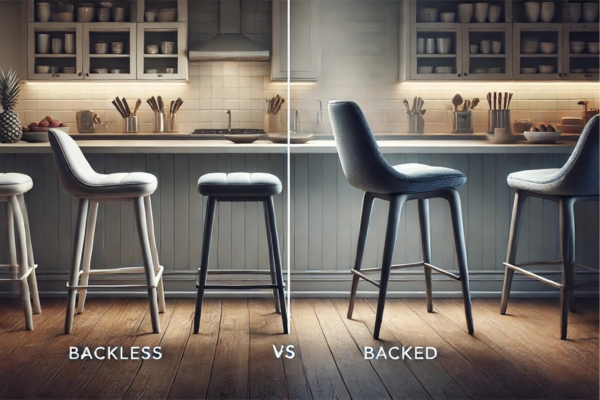
When choosing between backless and backed stools, comfort over extended periods is key. Backless stools fit smaller spaces and often look sleek, but for longer sitting sessions, a stool with a back provides crucial lumbar support. Higher-backed stool offer support for those who need it, while backless options work well for brief stints. Each type offers unique advantages depending on the space and how it will be used.
Choosing The Right Seat Depth And Width
Seat depth and width play a significant role in comfort. For most people, seat depths between 16 and 18 inches provide ample space without feeling cramped. Wider seats add comfort, especially for longer sits, while deeper seats accommodate those with longer legs. The width also shapes the school’s overall look—if space allows, larger seats create an inviting appearance and elevate the design of the room.
Matching Bar Stools With Your Design Style
Bar stools are available in an impressive range of styles, from vintage rustic to minimalist modern. Selecting stool that match your decor ensures a harmonious look. For farmhouse kitchens, distressed wood stool are a natural fit, whereas sleek metal designs complement contemporary spaces. Colors, textures, and finishes should reflect the room’s character, turning bars stool into integral elements that enhance the overall aesthetic.
Common Mistakes To Avoid When Buying Bar Stools
Common mistakes can turn a simple purchase into a source of frustration. Failing to measure the counter height is a frequent blunder that leads to discomfort and wasted money. Additionally, sacrificing comfort for style often results in regret. Material quality matters, too—durability is crucial in high-use areas. Taking time to measure, assess options, and consider the long-term durability of your stool is time well spent.
Conclusion
Choosing the right bar stool height may seem like a minor detail, but it makes a profound impact on comfort, functionality, and style. Tailoring your choice to suit the needs of your space—and those who will use it—ensures that your stools do more than just fill a spot. They enhance the experience, add to the room’s visual appeal, and contribute to a harmonious space. From adjustable heights to outdoor-ready designs, today’s bar stool offer diverse options for every setting. So, as you embark on this decision, remember to think about height, style, and functionality, allowing your choice to seamlessly blend form and function in any environment.
